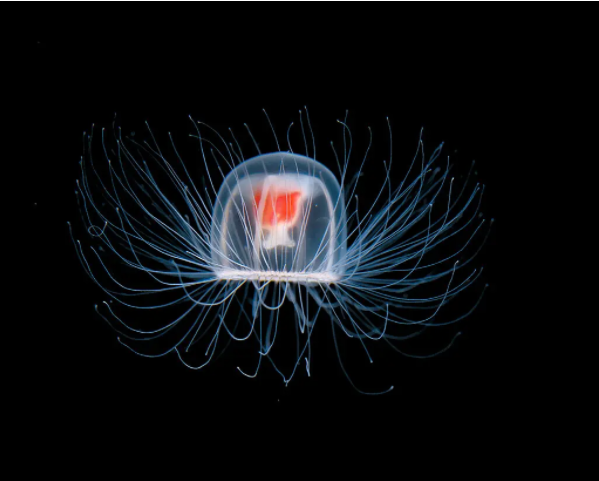- 翰林提供学术活动、国际课程、科研项目一站式留学背景提升服务!
- 400 888 0080
2023年纽约时报STEM写作比赛竞赛报名中!(附获奖作品)
说起形式多样、主题领域广泛、能覆盖大部分学生需求的学术活动,一定非NYT系列写作学术活动莫属,每年都有上万名的中学生参与这些赛事。2023年纽约时报STEM写作比赛学术活动报名中!(附获奖作品)
STEM写作学术活动
STEM(科学、技术、工程、数学)写作学术活动是由《纽约时报》主办的,是全球写作学术活动中最受瞩目也是含金量最高的大赛之一。STEM写作学术活动邀请来自全球的高中生围绕自己感兴趣的科学话题展开写作,对于世界运转规律的思考、生活中观察到的科学现象或者课堂中所学到的知识都可以作为选题。2021 年话题包括蛇毒、蛋壳、小提琴、长须鲸和 COVID-19.
通过写作的方式普及科学知识,对于擅长理科的同学来说是摆脱“理科怪人”刻板印象的好机会,对于擅长文科的同学而言也是展现你严谨逻辑和对科学兴趣的平台。而且参加STEM学术活动的获奖作品会刊登在全球知名度最高的刊物之一《纽约时报》的版面上。
学术活动时间:2023年2月2日至3月9日
适合群体:全球11-19岁的初高中生
作品要求:
1.STEM领域的任何题材均可,建议选择自己感兴趣的话题
2.确保你的主题足够窄,可以在 500 字或更少的时间内很好地涵盖它。
3.作品如果有任何形式的引用需要单独的文献引用页。
4.学生可以选择个人或组队参赛,但每位选手只能提交一份作品。
获奖作品展示:
Winner's Article 1
Stayin’ Alive: How the Immortal Jellyfish Cheats Death
by Varun Fuloria
15, from The Harker School in San Jose, Calif.

Two thousand years ago, the first emperor of China became obsessed with acquiring immortality, ruthlessly deploying his empire’s vast resources toward this quest. Unfortunately, Qin Shi Huang died at the age of 49 from ingesting mercury, which he mistakenly believed to be the elixir of life. Could the secret that eluded the powerful emperor, and the rest of humanity, be instead found in a humble jellyfish smaller than a fifth of an inch?
In 1988, Christian Sommer, a young German marine biologist on vacation in Italy, stumbled upon a peculiar trait in a known species of jellyfish. Instead of always growing older, Turritopsis dohrnii could seemingly reverse time until it reached the youngest stage of its development and began aging again. We now know that the adult jellyfish, also called a medusa, can transform into its youngest state, a polyp, in response to stressful conditions such as physical damage and starvation. An analogue of this “reverse metamorphosis” would be an adult butterfly that, when faced with danger, would transform into a caterpillar and would later grow back into a butterfly. Moreover, this magical insect would be able to repeat this process over and over again!
In order for the so-called “immortal jellyfish” to accomplish its curious transformation, its adult cells, which are already specialized for specific purposes, need to change into entirely different types of specialized cells. Turritopsis dohrnii represents the only known instance of this reprogramming process, called transdifferentiation, occurring in nature. However, there is considerable scientific interest in identifying artificial ways to repurpose cells in order to help reverse degenerative diseases. For example, heart failure is usually caused by the lack of healthy cardiac muscle cells called cardiomyocytes. This could be addressed by reprogramming other heart cells, such as widely available fibroblasts, into new cardiomyocytes. Similarly, the transdifferentiation of adult liver cells into insulin-producing pancreatic cells could help reduce the impact of diabetes.
While Turritopsis dohrnii can be challenging to keep in the lab, being sensitive to temperature and diet, its transdifferentiation can be readily stimulated and occurs within 48 to 72 hours, making the process easy to study. Maria Pia Miglietta, an associate professor of marine biology at Texas A&M University at Galveston, is studying the messenger RNA molecules of the animal throughout various stages of its “life,” both during regular and reverse metamorphosis. Dr. Miglietta’s research identifies biological processes that are significantly over- and under-expressed across these stages, unlocking clues for artificially inducing transdifferentiation of cells in other organisms.
Despite its nickname, Turritopsis dohrnii is not really immortal in the manner that Qin Shi Huang aspired to be; it can easily be killed by predators or die of disease. However, its ability to reverse the aging process by reprogramming its cells could help develop treatments for some of humanity’s most widespread diseases. And that would bestow an undying legacy on this tiny sea creature.
(478 Words)
Works Cited
Gannon, Megan. “China’s First Emperor Ordered Official Search for Immortality Elixir.” LiveScience, 27 Dec. 2017.
Ieda, Masaki, et al. “Direct Reprogramming of Fibroblasts into Functional Cardiomyocytes by Defined Factors.” Cell, 5 Aug. 2010.
“The Immortal Jellyfish.” American Museum of Natural History, 4 May 2015.
Ling, Thomas. “The Secrets of the Immortal Jellyfish, Earth’s Longest-Living Animal.” BBC Science Focus Magazine, 15 May 2021.
Miglietta, Maria Pia, et al. “Transcriptome Characterization of Reverse Development in Turritopsis dohrnii (Hydrozoa, Cnidaria).” G3 Genes|Genomes|Genetics, 1 Dec. 2019.
Nagata, Renato. “Small Jellyfish and the Secret to Eternal Life.” Bate, 19 Nov. 2020.
“Research.” The Real Immortal Jellyfish, 10 Dec. 2020.
Rich, Nathaniel. “Can a Jellyfish Unlock the Secret of Immortality?” The New York Times Magazine, 28 Nov. 2012.
提前规划学术活动报名,报名事项咨询请扫码
【免费领取】学术活动最新备赛资源+名师专业解答


最新发布
© 2025. All Rights Reserved. 沪ICP备2023009024号-1









